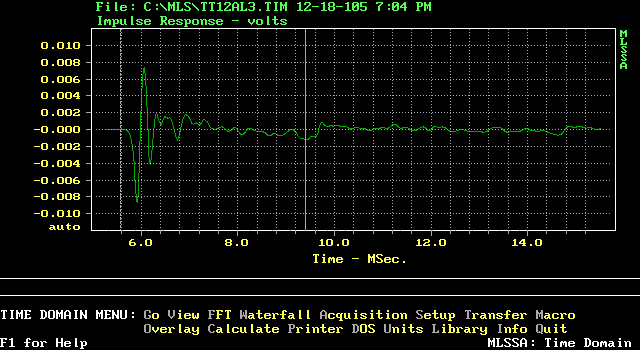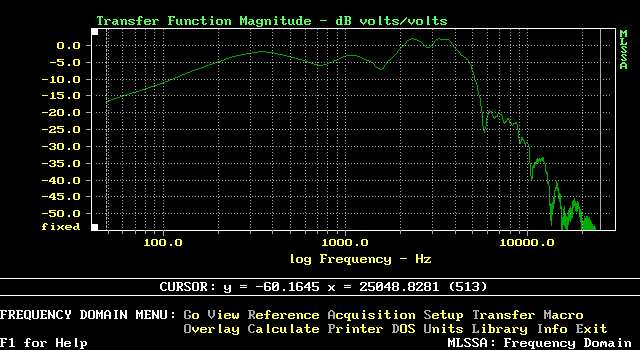The 12" Alnico Tone Tubby

And now for something completely different. This is the Tone Tubby 12" Alnico-magnet guitar speaker in an open baffle - wait, this isn't a joke, it sounds really good, seriously. For one thing, it uses a hemp cone - OK, OK, enough of the inevitable stoner jokes.
Hemp does something you don't see in the exotic carbon-fiber, Kevlar, metals, or this-n-thatium exotics; it doesn't break up. Yes, that's right. No cone cry, no raspy breakup, no hashy grating sound at high frequencies or at high levels.
I listened to this driver full range, no tweeter or woofer support, in an open-baffle, at levels where I was physically flinching from the sonic impact of a trumpet blast. This thing is loud. It's also sweet; it does not sound like a Klipsch, Altec, or JBL, but it most certainly has a big, powerful, physical sound, nothing at all like the petite 6" Euro favorites. In case you've noticed, even 30-watt guitar amps can play at shockingly high levels, much louder than nearly any hi-fi system.

Here's the reason for the sweetness. The smoothness of the rolloff region is one of the best I've seen. Big 12" paper-cone drivers usually go wild above 5 kHz, with violent peaks and dips - you want rough curves, look at any of the specs for guitar speakers. The Tone Tubby, though, has a remarkably smooth and graceful rolloff region, much smoother than the audiophile exotics. This is an unsmoothed curve, by the way, none of that 1/3 octave smoothing that manufacturers like to sneak in.
The other advantage of the TT is the Alnico magnet. This doesn't show in any curve, and I'm at a loss how to measure Alnico's sonic character. Let's just say every Alnico speaker I've heard to date has a special quality, a low-level delicacy to tone that just isn't there in the ceramic-magnet equivalent. The tonal vividness of the Alnico TT is in the Lowther league, but without the whizzer-cone coloration.
I'm told by Gary Pimm the small notch at 2.9 kHz (and 5.8kHz) is actually a reflection off the stamped-frame basket, and gluing 3/8" felt pads on the inside of the frame gets rid of it completely. This leaves the 4 to 5 dB elevated region between 1.5 and 5 kHz, which is pretty simple to equalize with a simple rolloff or shelf filter.
I can say subjectively the speaker has surprisingly low midrange coloration, less than many audiophile speakers, and much less than the stock Klipsch Chorus mentioned earlier. So maybe a very gentle and broad notch filter tuned to 2.9 kHz would make this an all-out audiophile speaker. Yes, it is directional, and it probably sounds best about 5 to 10 degrees off-axis mounted on a large open baffle.
By the way, the TT 12" Alnico is 97 dB/metre (3.4%) efficient in an open baffle - that's the Theile/Small piston-band efficiency. The 1.5 to 5 kHz region is 4 to 5 db higher still. Yes, Lowther territory - but no horn loading needed.
Text and Pictures © Lynn Olson 2006.